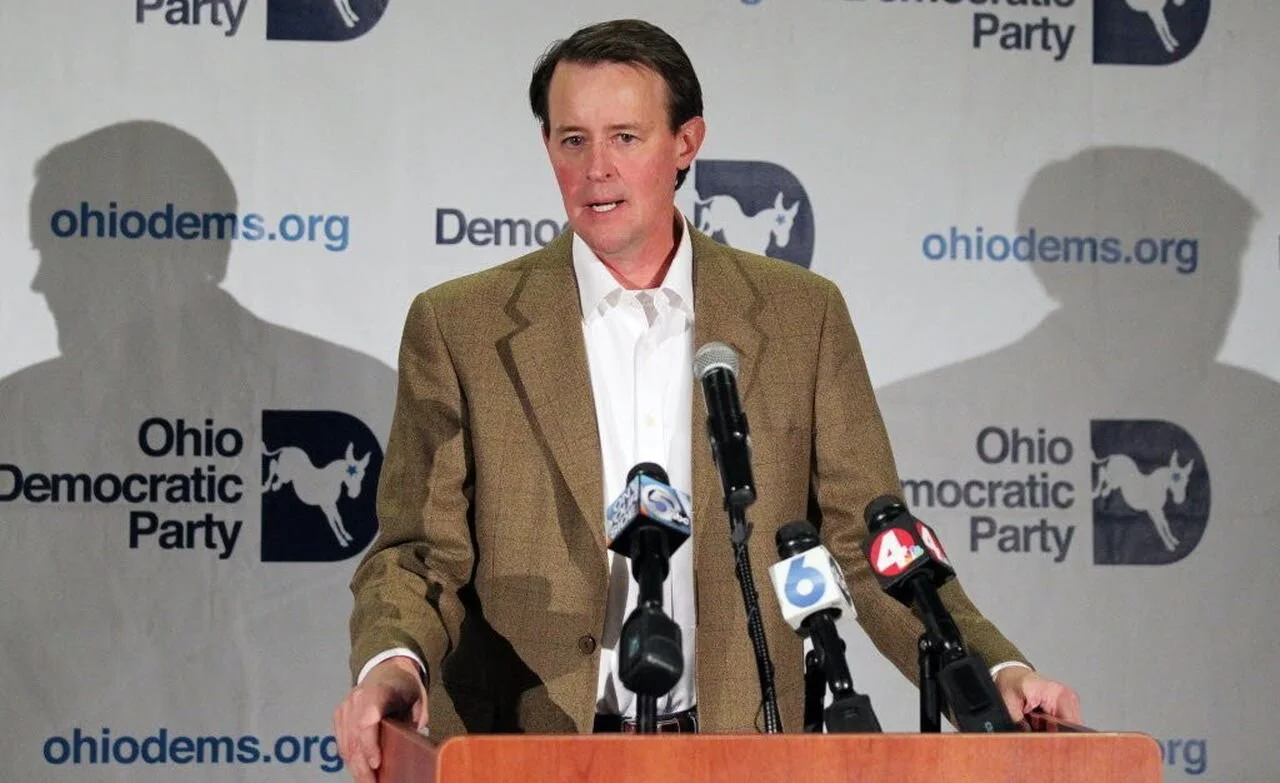Elections have consequences. And in the most decisive state in the nation, the 2014 midterms have already produced measurable improvement.
In the wake of Republicans‘ easy victories Tuesday, Chris Redfern announced he would be stepping down as the chair of the Ohio Democratic Party. The writing had been on the wall for Redfern in recent weeks, whose snide comments the Ohio press had become inured to. But when Redfern mocked his own party’s candidate for governor to The New York Times, what had been an open secret of an abusive relationship between a man and his party finally had to be confronted.
The role of the state leader for the Democratic Party has repercussions far beyond one election, in one state. In this election alone, handing the Republicans an easy win elevates shoddy public servants to the next tier of their aspirations — for Gov. John Kasich, he can set his sights on the White House, simply because he can win Ohio, which is all you need to win anymore. Secretary of State Jon Husted looks to follow in his predecessor Ken Blackwell’s footsteps, applying his game of voter suppression in his own race for governor. Meanwhile, the vital candidacy of Nina Turner for Secretary of State was a critical opportunity to enable widespread voting for the 2016 elections, when many new voters will be coming to the polls for what could be the first female president.
Redfern’s commitment to bullying away potential Democratic candidates as disloyal was well-known. The nominating convention in which he was first coronated as ODP chair was rife with dissent and threats, with others who dared seek the leadership position chair ostracized as persona non grata. Petty and vindictive, it didn’t take much to get on his bad side, and it never seemed to be about ideology or policy, more about his people above others. The Democratic Primary became an empty exercise in posturing, as eventually no one seemed to be challenging any of the party picks for some reason.
So when The New York Times asked Redfern why the chair of the Democratic Party was resorting to abandoning his thinly-vetted nominee for governor, he demurred that no one else stepped up to run after Ted Strickland opted to not run again. Of course, to those who recall Redfern’s isolation of Richard Cordray for gauging support for his own potential gubernatorial bid, this claim of Redfern’s was simply more wash for hogs. The noncompetitive race in Ohio allowed the Republican Governors Association to pour more money into other state races, which they won, as did pretty much every candidate with the most money.
Ohio is still a 50/50 state. John Kasich had his ass handed to him at the polls just a few years ago when two thirds of the state soundly rejected the anti-public worker laws that were from the ALEC bill mill. This sweep of people power is covered in my film PAY 2 PLAY: Democracy’s High Stakes as vital proof that we have the power to organize against the richest and anonymous corporate forces, and win. And, do it in Ohio.
In this bellwether state that serves as an eerie prognosticator for sentiments around the country, Chris Redfern lost his own seat in the Ohio House, losing to a first-time candidate who is a suspect in a burglary. The typically defiant Redfern, known for a Twitter presence so combative he used a skull and crossbones as his avatar, deleted his social media accounts immediately after the election, announcing he would step down in mid-December. Some in his party have pondered: why wait that long?
Ohio Democratic Party Chair Chris Redfern was forced out of his leadership position after stinging losses and revelations of bullying.
An Ohio newspaper asked Redfern about allegations made in my documentary that Redfern destroyed campaign materials of a Democratic candidate during a primary. Redfern denied any such thing, suggesting I lied and that I never sought his response. Unfortunately, Redfern’s refusal to give me an interview in 2010 after I learned about these staggeringly anti-democratic tactics doesn’t help him now that the movie is out. And since the film’s release, yet another candidate in the film told me that Redfern did the same to thing to their campaign.
So there are brighter days ahead in the swing state of America. Whatever new leadership rises from the smoldering rubble of Redfern’s ODP, it will be clear that the party has to be inclusive, it must encourage many different voices to attract more supporters, and, like the college football that Ohio is freaking obsessed with, they have to work like a team.
— John Wellington Ennis


